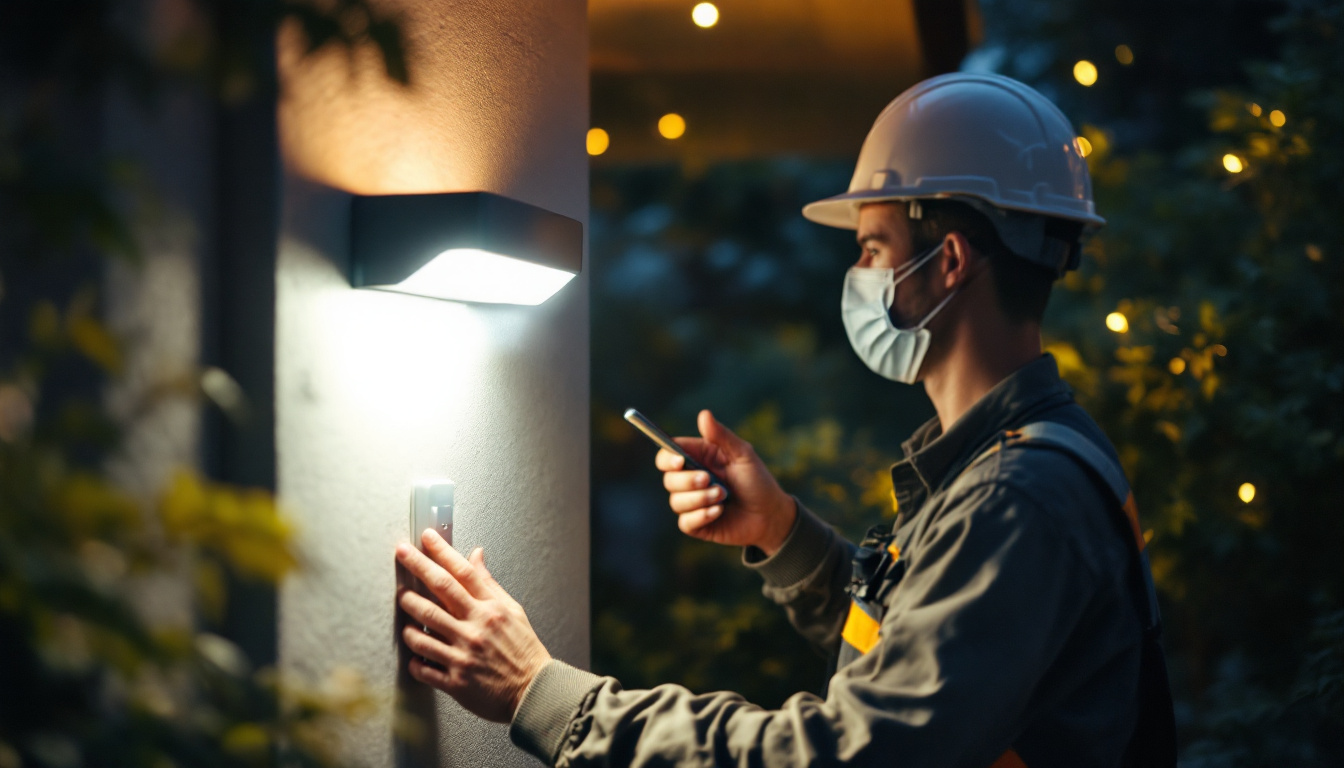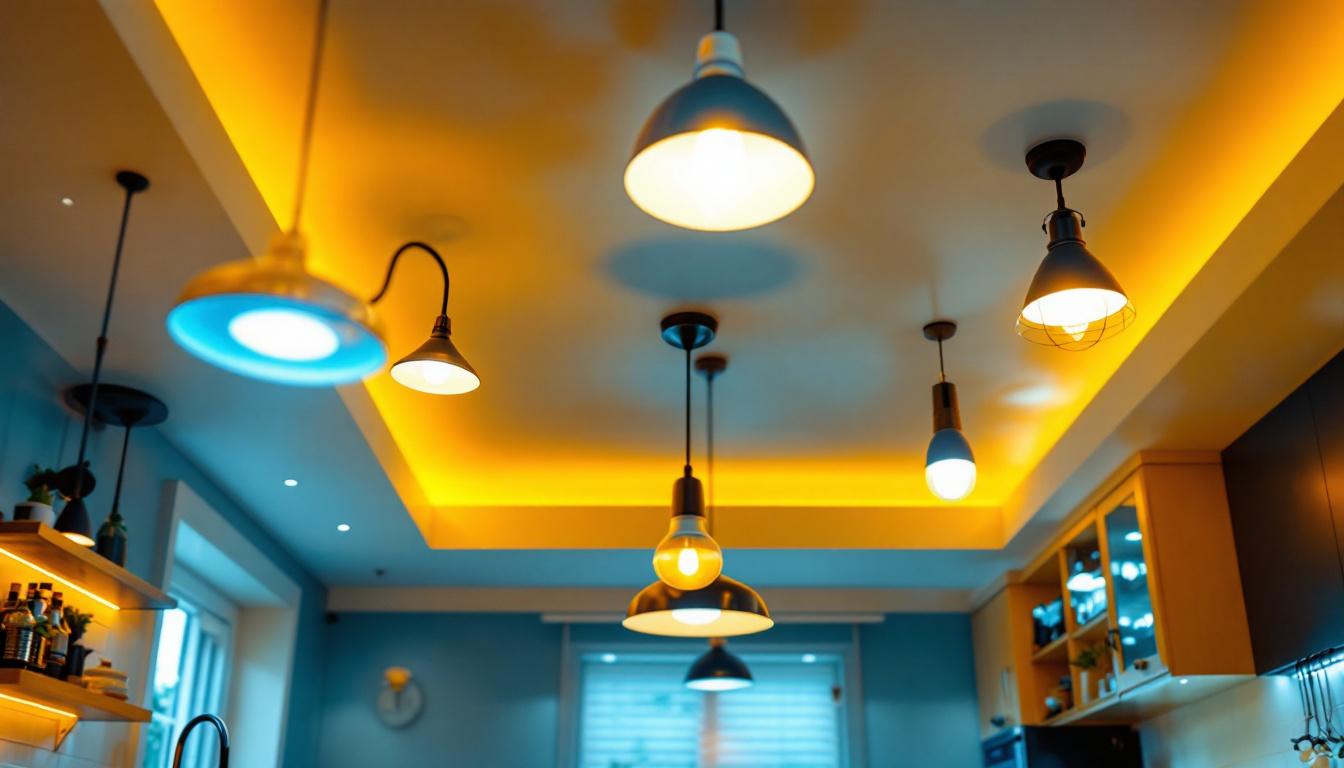
Light Sensor For outdoor lighting: Why Every Lighting Contractor Needs
In the ever-evolving world of outdoor lighting, the integration of technology has become paramount. Among the various advancements, light sensors stand out as essential tools for lighting contractors. These devices not only enhance the functionality of outdoor lighting systems but also contribute to energy efficiency and user satisfaction. This article delves into the importance of light sensors in outdoor lighting, exploring their benefits, applications, and why every lighting contractor should consider incorporating them into their projects.
Light sensors, also known as photoelectric sensors, are devices that detect ambient light levels and automatically adjust the operation of lighting systems accordingly. They can turn lights on or off based on the amount of natural light available, ensuring that outdoor areas are well-lit when needed and conserving energy when they are not. This functionality is particularly beneficial in urban environments where streetlights play a crucial role in safety and security. By utilizing light sensors, cities can optimize their energy usage, reducing costs and minimizing their carbon footprint.
There are several types of light sensors available, each designed for specific applications. The most common types include:
Light sensors operate using photodiodes or phototransistors, which convert light into electrical signals. When the ambient light level falls below a predetermined threshold, the sensor sends a signal to the lighting system to activate the lights. Conversely, when natural light levels rise, the sensor will turn the lights off. This automatic adjustment not only enhances convenience but also significantly reduces energy consumption. In addition, many modern light sensors come equipped with features such as timers and dimming capabilities, allowing for even greater control over lighting conditions.
Furthermore, the integration of light sensors with renewable energy sources, such as solar panels, has opened new avenues for sustainable lighting solutions. For instance, solar-powered lights equipped with light sensors can charge during the day and automatically illuminate at night, providing an eco-friendly alternative to traditional lighting systems. This synergy not only promotes energy efficiency but also encourages the adoption of green technologies in both residential and commercial settings, paving the way for smarter and more sustainable urban landscapes.
Integrating light sensors into outdoor lighting systems offers numerous advantages that can enhance the overall performance and appeal of a project. Here are some key benefits:
One of the most significant benefits of light sensors is their ability to conserve energy. By ensuring that lights are only on when necessary, contractors can help clients reduce their energy bills and minimize their carbon footprint. This is particularly important in commercial settings, where outdoor lighting can account for a substantial portion of energy consumption. Furthermore, the integration of smart technology allows for the scheduling of lighting based on specific times of day or weather conditions, optimizing energy use even further. For instance, during cloudy days, sensors can adjust the brightness of the lights automatically, ensuring that the area remains adequately illuminated without wasting energy.
Properly illuminated outdoor spaces are crucial for safety and security. Light sensors ensure that areas are well-lit during the night, deterring potential intruders and providing peace of mind for property owners. By integrating motion sensors with light sensors, contractors can create a responsive lighting system that activates when movement is detected, further enhancing security. This dual functionality not only improves safety but also serves as a deterrent against vandalism and theft, as well-lit areas are less appealing to criminals. Additionally, the ability to customize lighting patterns and intensities can help create a welcoming environment while still maintaining a secure atmosphere.
Frequent on-off cycling can shorten the lifespan of outdoor lighting fixtures. Light sensors help mitigate this issue by ensuring that lights are only activated when necessary. This not only extends the life of the fixtures but also reduces maintenance costs for clients, making it a win-win situation for both contractors and property owners. Moreover, with advancements in LED technology, which is often paired with light sensors, the durability and efficiency of lighting systems have significantly improved. LEDs have a longer operational life compared to traditional bulbs, and when combined with light sensors, they can provide an even more sustainable and cost-effective lighting solution. This synergy not only enhances the aesthetic appeal of outdoor spaces but also contributes to a greener environment by reducing waste and energy consumption.
Light sensors can be utilized in a variety of outdoor lighting applications, making them versatile tools for lighting contractors. Below are some common applications where light sensors can be particularly beneficial:
In residential settings, light sensors can be used to control garden lights, pathway lighting, and security lights. Homeowners appreciate the convenience of automatic lighting that adapts to changing conditions, ensuring that their outdoor spaces are always welcoming and safe.
For commercial properties, such as parking lots and building exteriors, light sensors can significantly reduce energy costs. By ensuring that lights are only on during low-light conditions, businesses can save money while maintaining a well-lit environment for customers and employees.
In public spaces, such as parks and streets, light sensors can enhance safety and usability. They can be integrated into streetlights and pathway lighting to ensure that these areas are illuminated when needed, improving visibility and safety for pedestrians and cyclists.
When selecting a light sensor for a specific project, contractors should consider several factors to ensure optimal performance. These factors include:
Different environments may require different types of light sensors. For example, sensors installed in areas with heavy foliage may need to be more sensitive to light changes, while those in open areas may require less sensitivity. Understanding the local environment is crucial for selecting the right sensor.
Many lighting systems are already equipped with controls that can be integrated with light sensors. Contractors should assess existing systems to determine compatibility and ensure seamless integration. This can enhance functionality and provide a more cohesive lighting solution.
While light sensors may represent an additional upfront cost, the long-term benefits often outweigh the initial investment. Contractors should conduct a cost-benefit analysis to demonstrate the potential savings in energy and maintenance to clients. This can help in justifying the inclusion of light sensors in a project.
Proper installation of light sensors is crucial for their effectiveness. Lighting contractors should pay attention to the following considerations:
The placement and orientation of light sensors can significantly impact their performance. Sensors should be positioned to avoid obstructions that may block light, such as trees or buildings. Additionally, they should be oriented to face the area that requires illumination, ensuring accurate light detection.
After installation, light sensors may require calibration to ensure they respond appropriately to ambient light levels. Contractors should familiarize themselves with the specific calibration procedures for the sensors they are using to optimize performance. This may involve adjusting sensitivity settings or light thresholds.
Once installed, light sensors should be tested to confirm they are functioning correctly. Regular maintenance checks can help identify any issues early on, ensuring that the lighting system operates efficiently over time. Contractors should establish a maintenance schedule to keep the system in optimal condition.
The field of light sensor technology is continually advancing, with new innovations emerging regularly. Contractors should stay informed about these trends to remain competitive in the industry. Some notable trends include:
With the rise of smart home technology, light sensors are increasingly being integrated into smart lighting systems. These systems allow for remote control and automation, enabling users to customize their outdoor lighting based on personal preferences and schedules. Contractors should consider offering smart lighting solutions to meet the growing demand.
The Internet of Things (IoT) is transforming how lighting systems operate. Light sensors can be connected to IoT platforms, allowing for real-time data collection and analysis. This can provide valuable insights into lighting usage patterns and help optimize energy consumption further.
As technology advances, light sensors are becoming more sensitive and accurate. New materials and designs are being developed to improve their performance in various lighting conditions. Contractors should keep an eye on these advancements to offer clients the most effective solutions.
Incorporating light sensors into outdoor lighting projects is not just a trend; it is a necessity for lighting contractors aiming to provide efficient, sustainable, and user-friendly solutions. The benefits of energy efficiency, enhanced security, and increased longevity of lighting fixtures make light sensors an invaluable addition to any outdoor lighting system. By understanding the various types of light sensors, their applications, and installation considerations, contractors can elevate their services and meet the evolving needs of their clients.
As technology continues to advance, staying informed about the latest trends and innovations in light sensor technology will ensure that lighting contractors remain competitive in the industry. Embracing these tools will not only enhance the quality of outdoor lighting projects but also contribute to a more sustainable future.
Ready to elevate your outdoor lighting projects with the most efficient and sustainable light sensor technology? Look no further than LumenWholesale, where we provide lighting contractors with the highest quality, spec-grade lighting products at unbeatable wholesale prices. Say goodbye to inflated markups and hello to superior lighting solutions that meet the highest industry standards. With our hassle-free bulk buying and free shipping, you can access premium lighting at the best value — ensuring your projects shine without breaking the bank. Discover the perfect fusion of quality, affordability, and convenience at LumenWholesale.

Discover the transformative advantages of smart switches for lighting contractors.

Explore the pros and cons of hallway recessed lighting compared to alternative options.

Discover the ultimate guide to kitchen ceiling lighting with our essential checklist tailored for lighting professionals.

Discover the essential techniques and benefits of ballast bypass LED installations for lighting contractors.